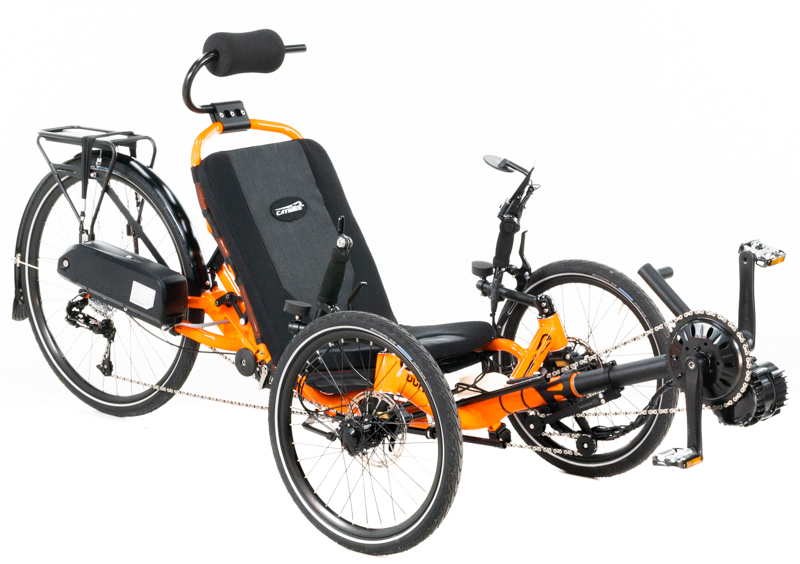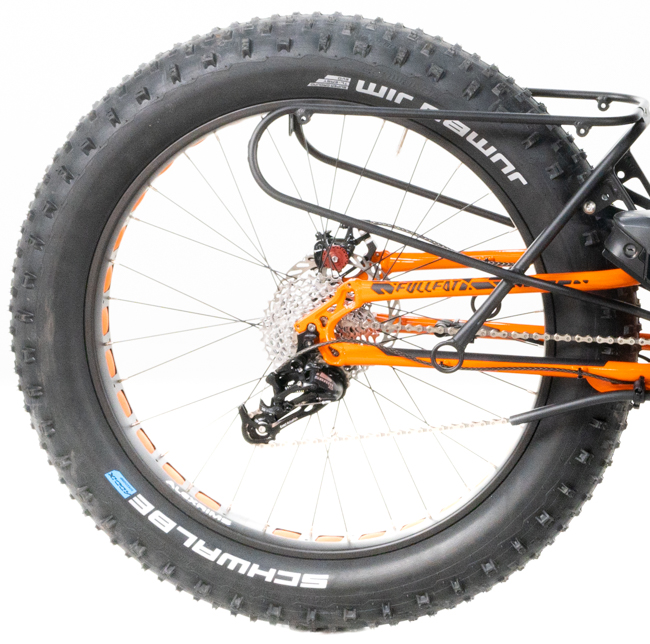

Suspension On a Trike? Need it or Leave it?
Published on 07/17/2024
Having suspension on a trike can greatly enhance the riding experience, offering numerous benefits related to comfort and performance. Some may wonder though if suspension is really necessary on a trike. In this article we'll explain some of the pros and cons of having suspension on your trike and some of the suspension alternatives that are available.
Pros of Suspension on Trikes
In this section we'll discuss some of the benefits that come with having suspension on your trike and some situations where it may be needed.
Improved Comfort

Have you ever ridden on a trike without suspension and felt like you could feel every bump in the road? Some people find that suspension allows them to have a more comfortable ride. Suspension does this through a variety of reasons.
Suspension systems absorb shocks and vibrations from uneven terrain, providing a smoother ride. This is particularly beneficial on rough roads, gravel paths, or trails.
If you frequently ride on unpaved trails, gravel roads, or other rough terrains, suspension can significantly enhance comfort and control by absorbing shocks and vibrations. Suspension is definitely a great option to consider for off road riders.
Long-Distance Touring
Long rides and touring often involves a variety of surfaces, from smooth highways to bumpy backroads. Due to this long distance riders might find that they're feeling a lot of bumps and vibrations while riding. If you were going on a short ride bumps may not matter so much, but the longer your ride is the more you're going to feel it. This is where suspension can provide a more consistent riding experience.
For long-distance touring, suspension can reduce rider fatigue by minimizing the impact of road vibrations, making extended rides more comfortable. This allows riders to stay out longer and be able to rider farther without becoming exhausted.
Health Concerns
Health concerns may be another reason that riders may want to consider suspension. Riders with back, neck, or joint issues may find suspension necessary to prevent discomfort and pain caused by road vibrations and impacts.

When Suspension May Not Be Necessary
There are some situations where you may find that you don't need suspension or where it may not be necessary. We will dive into that down below.
Riding on Smooth Pavement
If you primarily ride on smooth, well-maintained roads or dedicated bike paths, the benefits of suspension may be less noticeable, as the terrain doesn't generate significant shocks.
Added Weight
Suspension systems add weight to the trike, which can be a consideration for riders looking to maximize speed and efficiency, especially on uphill climbs.
Maintenance and Cost
Suspension systems require regular maintenance to keep them functioning properly. This can include checking and adjusting components, as well as potential repairs.
Trikes with suspension are generally more expensive than those without. For budget-conscious riders, the additional cost may not justify the benefits if the riding conditions do not demand it.
Alternatives to Suspension
Suspension may not be for everyone and we get it! If you feel that suspension may not be for you here's some alternatives that while not being suspension still offer similar comfort.

Tire Selection
Wide Tires: Using wider/fat tires with lower pressure can provide some cushioning and absorb minor shocks, offering a compromise between a fully rigid frame and a suspension system.
Tire Pressure: Adjusting tire pressure based on the terrain can also help manage comfort and ride quality.
Seat Comfort
Padded Seats: Investing in a well-padded seat or adding additional padding can improve comfort without the need for suspension.
Get Out and Ride!
Suspension on a recumbent trike is not strictly necessary for all riders, but it offers significant benefits in terms of comfort, control, and versatility, particularly for those riding on rough terrains or undertaking long-distance tours. If you prioritize comfort and plan to ride on varied or rough surfaces, a trike with suspension can enhance your riding experience. However, for riders sticking to smooth, paved roads and focusing on efficiency and performance, a rigid frame might be sufficient. Ultimately, the decision depends on your specific riding needs and preferences.




